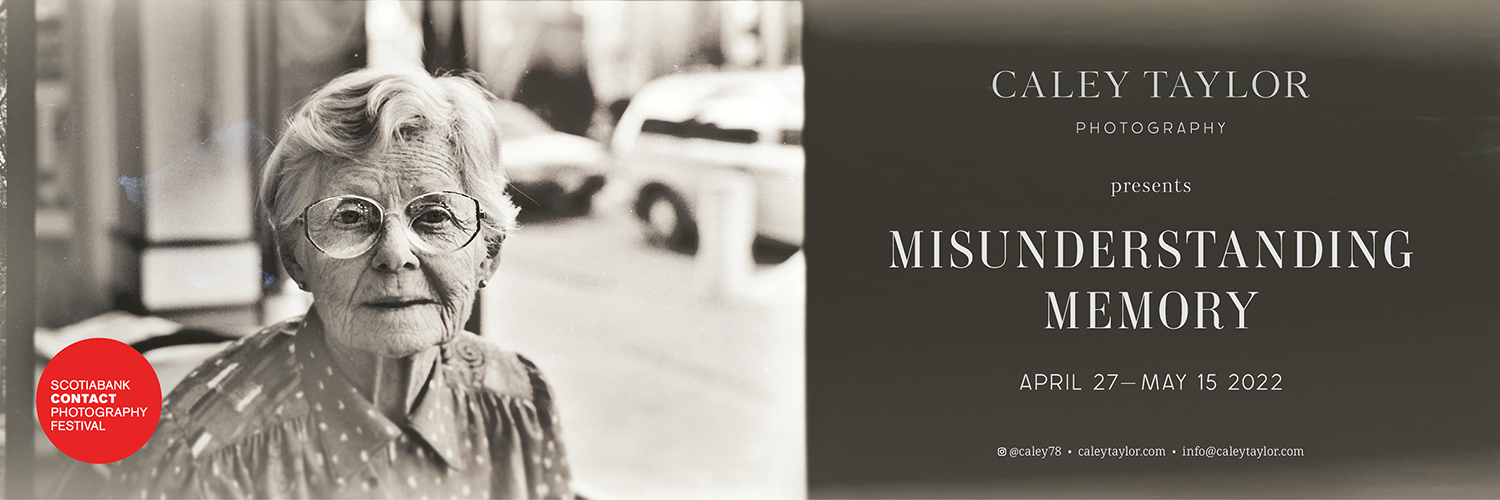A solo photography exhibition exploring the process and inaccuracy of our memories.
By Caley Taylor
The way we behave and interact with others is based on our past experiences and the stories we tell from our memories. Our memories are hazy, subjective constructs. Every time we conjure up a memory, it is re-saved in our brains, slightly differently. Most memories cannot be fully trusted.
Have you ever had a disagreement with a friend or family member about a childhood or past experience? Each of you having a totally separate story? How do you know you aren’t the one embellishing facts? “You don’t!”, explains Malcolm Gladwell in an episode of his podcast, Revisionist History, “Our minds are funny that way. They are totally fallible.”
If 5 different people took a photograph of the same scene, at the same time, it would be recorded differently 5 times. The same is for memory. We may be at the same event, right beside each other, but our brains will record different snippets of time and blend them together with our life experiences to create a memory. The difference between the film photograph and the memory, is that the photograph is absolutely accurate. The memory is questionable.
The psychologist Daniel Schacter describes the process of memory making, “We now know that we do not record our experiences the way a camera records them. Our memories work differently. We extract key elements from our experiences and store them. We then re-create or reconstruct our experiences rather than retrieve copies of them. Sometimes, in the process of reconstructing, we add on feelings, beliefs, or even knowledge we obtained after the [initial memory] experience. In other words, we bias our memories of the past by attributing to them emotions or knowledge we acquired after the [initial memory] event.”
In my exploration of memory, I realized film negatives absolutely speak the truth. While developing the negatives, the light-sensitive silver halide crystals are converted with chemicals into metallic silver and become concrete documentations of a moment in time. This is the opposite of digital photographs (and memories) which are susceptible to filters or photoshop changes and distortions.
My exhibition photographs begin as film in my old Pentax 35mm ME Super camera or my 6×6 Bronica medium format camera. The negatives are then developed in my darkroom where I deliberately make mistakes for imperfect results. The intentional defects create exciting distortions, strange depth-of-field and window-framed images, which are my attempts to conceptualize a memory. My photographs are intentionally imperfect because memories are far from perfect recordings of our past events. Memories fade, recede, change, become embellished and disappear completely when we pass.
“You can not wholly trust them [memories].”, states Malcolm Gladwell in an interview about his podcast. “One of the most important things memory researchers will tell you is that you can not confuse confidence with accuracy. In other words, the fact that I am absolutely certain that what happened, happened, is not a reliable guide to accuracy.”.
So, let’s be kind to our friends and family by acknowledging our faulty minds. We all have differing interpretations of our past experiences and we all mistakenly recall events, but this is normal. Memory distortions are part of being a human. Be forgiving and gentle with each other. All we can do is try to live as peacefully as possible in the present moment and hopefully enjoy each others embellished stories from our unique and one-of-a-kind journey.

